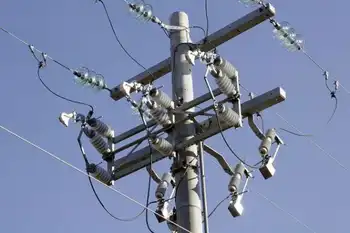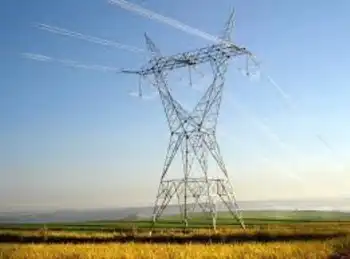Chinese smart grid rollout to exceed $45 billion
These new technologies, known as 'smart grid', are estimated to be a nearly $100 billion opportunity over the next five years and would easily exceed the $45 billion China is spending on 3G telecommunications technology over the same period.
"Ultimately, the thinking is that the spending on energy production and distribution — the grid — will dwarf 3G spending," said Will Davis, senior vice-president at Cogo Group, a component supplier that has won smart meter tenders in China with its partner, the Wasion Group.
With total power capacity set to reach 1,430 gigawatt by 2015 from 874 gigawatt at the start of 2010, China has to figure out how to bring trillions of kilowatt hours of power to more than a billion customers, sometimes over very long distances.
It has also made it a priority to improve efficiency and encourage the use of cleaner but less reliable energies like wind, solar and hydro.
Smart-grid technology brings power grids into the telecommunications age, connecting "smart meters" in households and businesses to central monitoring systems capable of detecting and redressing outages or overloads in an instant.
The installation of smart meters alone will be worth $3.1 billion in 2011, up from $2.4 billion this year, according to estimates by the China Electricity Council — and foreign firms are already looking to supply components, control and automation systems, and know-how.
"It is no secret that CISCO and IBM are in China every month because they want to figure out how to participate in these massive projects," Davis of Cogo Group said.
IBM plans to launch nine smart-grid projects across China and expects to generate $400 million in smart-grid revenue in China alone, it said earlier this year. Companies like Hewlett-Packard, ABB, Siemens, Westinghouse, Duke Energy and Alstom are also involved smart-grid projects.
Analysts at Huadian, one of China's biggest utilities, predict that the domestic grid infrastructure market will be worth 620 billion yuan US $93.35 billion over the next five years. Smart-grid technology also requires considerable levels of investment in power storage — fuel cells or even second reservoirs at hydropower plants that keep energy in reserve until it is needed.
China's advantage is that it is starting from scratch, building smart capabilities into its new infrastructure.
"China has a huge opportunity because so much new infrastructure is being built, while in the United States it is updating old infrastructure and trying to integrate 100-year old equipment into the system," said David Mohler, chief technology officer with U.S. utility Duke Energy.
Unlike the United States, where specifications will be decided on a state-by-state and even utility-by-utility basis, China is also in a position to establish unified protocols and technological standards.
While China has not yet finalized its nationwide smart grid strategy for the 2011-2015 five-year plan period, the State Grid Corporation, the country's biggest power distributor, has already laid out its own plan.
The State Grid, which covers 26 of China's 31 provinces, said this month it will invest 1.7 trillion yuan on new power routes over the period, laying 337,000 kilometres of new delivery capacity of 110 KV or more and building a system that will be "basically smart" by the end of 2015, pulsing with information as well as power.
Some of the domestic equipment suppliers expected to benefit as the State Grid Corporation opens up the bidding process include Tianwei Baobian, Tebian Electric Appliance, Henan Pinggao Electric, XJ Electric and the Changyuan Group.
One risk with smart grids is that they cover such a multitude of emerging technologies that policies can rapidly become out of date. It remains unclear which protocols and standards will best solve China's unique problems and deliver energy over vast distances from the remote west to the developed east.
"Over time, the definition of what is actually smart is going to change and you will have to go in and upgrade some of this in a few years," said Davis of Cogo Group.
China's priority thus far has been to build a system that would reduce the risk of outages, and it has already established a program called WARMAP, which covers Shanghai and the provinces of Anhui and Jiangsu, allowing regulators to detect potential problems before they happen and avoid the catastrophic shortages that hit the region in 2004-5.
But these relatively unsophisticated systems cannot yet deal with new energy challenges like charging stations for electric vehicles or, more crucially, the rollout of renewable energy.
China would have to handle as much as 600 GW of renewables by 2020 — and much of it consists of "intermittent" sources like hydro, wind, and solar.
And the nation has invested heavily in renewable capacity in the last five years, raising installed wind capacity to 25 gigawatt by the end of 2009, doubling for three consecutive years. It plans to raise capacity to 90 GW by 2015, China's National Energy Administration has said.
But many of China's huge wind farms stand idle for large parts of the year as wind speeds plummet. With many regions committed to raising wind capacity at any price, thousands of turbines remain unconnected to any grid at all.
"Wind power can disappear within minutes and the grid has to be able to find alternatives fast," said Xue Yusheng, senior researcher at the State Grid's Electric Power Research Institute.
"Before, China has focused on the strength of the power grid but now needs to look at it being smart as well."
Related News

Hot Houston summer and cold winter set new electricity records
HOUSTON - Last year's Houston cold winter and hot summer drove power use to record levels, especially among households that rely on electricity for air conditioning.
Electricity generation increased 4 per cent nationwide in 2018 and produced 4,178 million megawatt hours, surpassing the previous peak of 4,157 megawatt hours set in 2007, the Energy Department reported.
U.S. households bought 6 percent more electricity in 2018 than they did the previous year, reflecting the fact 87 percent of households cool their homes with air conditioning and 35 percent use electricity for heating.
Electricity sales to the commercial sector increased 2 percent in 2018 compared…





